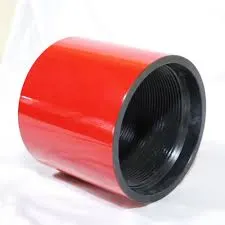- Afrikaans
- Albanian
- Amharic
- Arabic
- Armenian
- Azerbaijani
- Basque
- Belarusian
- Bengali
- Bosnian
- Bulgarian
- Catalan
- Cebuano
- Corsican
- Croatian
- Czech
- Danish
- Dutch
- English
- Esperanto
- Estonian
- Finnish
- French
- Frisian
- Galician
- Georgian
- German
- Greek
- Gujarati
- Haitian Creole
- hausa
- hawaiian
- Hebrew
- Hindi
- Miao
- Hungarian
- Icelandic
- igbo
- Indonesian
- irish
- Italian
- Japanese
- Javanese
- Kannada
- kazakh
- Khmer
- Rwandese
- Korean
- Kurdish
- Kyrgyz
- Lao
- Latin
- Latvian
- Lithuanian
- Luxembourgish
- Macedonian
- Malgashi
- Malay
- Malayalam
- Maltese
- Maori
- Marathi
- Mongolian
- Myanmar
- Nepali
- Norwegian
- Norwegian
- Occitan
- Pashto
- Persian
- Polish
- Portuguese
- Punjabi
- Romanian
- Russian
- Samoan
- Scottish Gaelic
- Serbian
- Sesotho
- Shona
- Sindhi
- Sinhala
- Slovak
- Slovenian
- Somali
- Spanish
- Sundanese
- Swahili
- Swedish
- Tagalog
- Tajik
- Tamil
- Tatar
- Telugu
- Thai
- Turkish
- Turkmen
- Ukrainian
- Urdu
- Uighur
- Uzbek
- Vietnamese
- Welsh
- Bantu
- Yiddish
- Yoruba
- Zulu
Understanding the Distinctions Between Casing and Tubing in Oil and Gas Operations
Understanding the Difference Between Casing and Tubing in Oil and Gas Operations
In the oil and gas industry, the terms casing and tubing are often used interchangeably by those outside the field, but they refer to two distinct components of a wellbore structure. Understanding the differences between these two critical elements is essential for professionals in the industry, as each plays a unique role in the extraction process.
Casing The Structural Backbone
Casing is a series of pipes that are installed in the wellbore after drilling to stabilize and protect the surrounding rock from collapsing. When drilling a well, the drilling mud is used to cool the drill bit and provide hydrostatic pressure to prevent the influx of formation fluids. Once drilling reaches a predetermined depth, casing is used to line the wellbore.
The casing serves several important functions
1. Structural Integrity Casing provides strength to the wellbore, preventing it from collapsing under geological pressure. This is especially important in unstable formations.
2. Zonal Isolation Casing helps isolate different layers of rock and fluids, preventing unwanted fluid migration between formations. This isolation is crucial for ensuring that production from one zone does not affect another.
3. Well Control Casing aids in maintaining control over the well by allowing the management of pressures within the wellbore, reducing the risk of blowouts.
4. Environmental Protection By isolating potential contaminant formations, casing helps protect groundwater and surface environments from potential hydrocarbon leaks.
Casing is not a simple component; it comes in various sizes and grades, each designed for specific applications. Common types include surface casing, intermediate casing, and production casing, each serving different depths and pressures often encountered in drilling operations.
Tubing The Production Pathway
what is the difference between casing and tubing?

In contrast, tubing is a smaller diameter pipe inserted inside the casing to transport oil, gas, or other produced fluids from the reservoir to the surface
. Tubing is an integral part of the production phase of a well and is installed during the completion process after the casing has been set.The primary functions of tubing include
1. Fluid Transportation Tubing forms a continuous path for hydrocarbon fluids to flow from the reservoir through the wellhead to the surface processing facilities.
2. Pressure Management As production continues, the tubing must be capable of withstanding internal pressures, which can fluctuate due to varying production rates. This requires tubing to be manufactured from materials that can handle such stresses.
3. Easier Maintenance Since tubing is a removable component, it allows for easier maintenance and replacement compared to casing. If tubing becomes damaged or corroded, it can be pulled out and replaced without disturbing the casing.
4. Enhanced Production Efficiency Tubing is often equipped with additional devices, such as pumps or valves, to optimize the flow of fluids and enhance overall production efficiency.
Summary of Differences
To summarize, the key differences between casing and tubing can be outlined as follows
- Purpose Casing supports the wellbore and provides stability, while tubing focuses on transporting produced hydrocarbons to the surface. - Size Casing has a larger diameter than tubing, reflecting its role in structural support. Tubing is smaller, designed to traverse through the casing. - Installation Timing Casing is installed immediately after drilling is completed, whereas tubing is inserted during the completion phase of the well. - Maintenance Casing remains in place for the life of the well, while tubing can be removed for maintenance or replacement.
In conclusion, understanding the differences between casing and tubing is fundamental for anyone involved in oil and gas operations. Each plays a critical role in ensuring the structural integrity, safety, and efficiency of hydrocarbon production. Proper management of both components not only maximizes production but also aids in minimizing environmental impacts, highlighting their importance in sustainable oil and gas practices.
-
Tubing Pup Joints: Essential Components for Oil and Gas OperationsNewsJul.10,2025
-
Pup Joints: Essential Components for Reliable Drilling OperationsNewsJul.10,2025
-
Pipe Couplings: Connecting Your World EfficientlyNewsJul.10,2025
-
Mastering Oilfield Operations with Quality Tubing and CasingNewsJul.10,2025
-
High-Quality Casing Couplings for Every NeedNewsJul.10,2025
-
Boost Your Drilling Efficiency with Premium Crossover Tools & Seating NipplesNewsJul.10,2025







